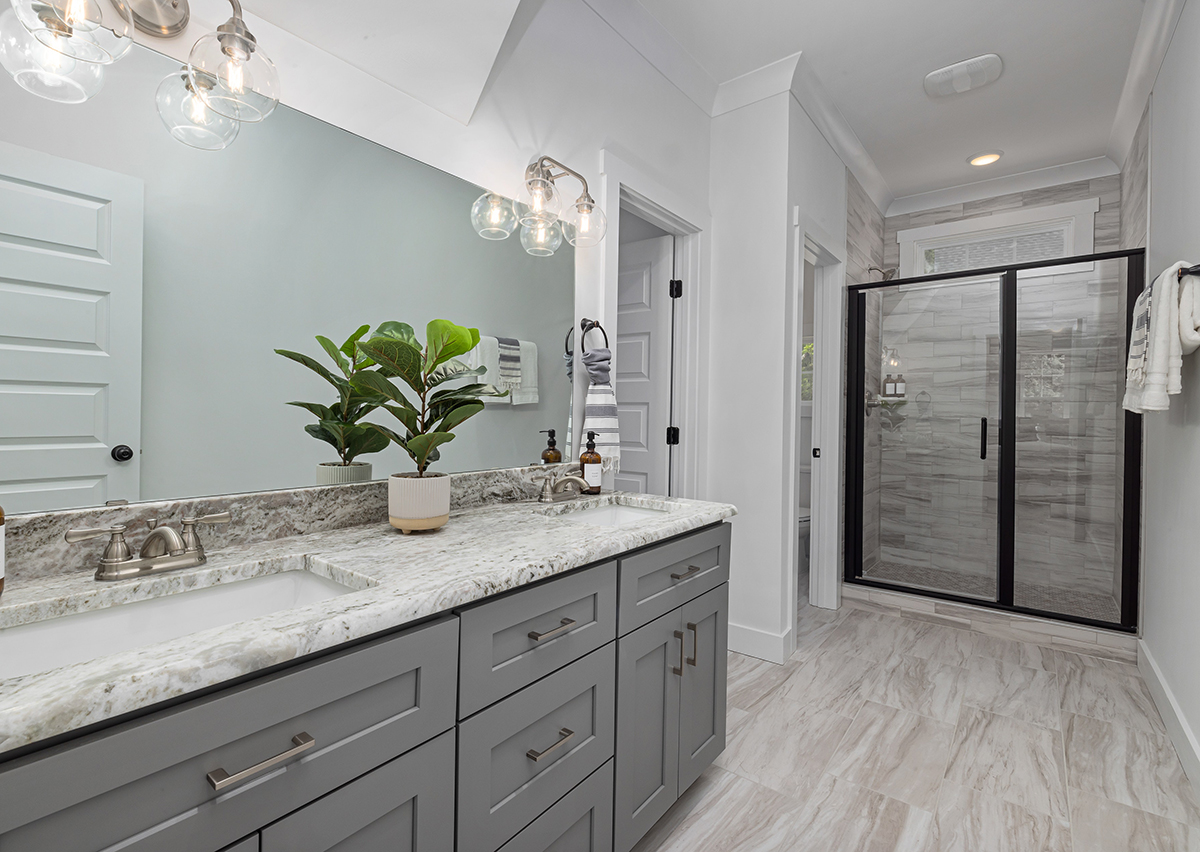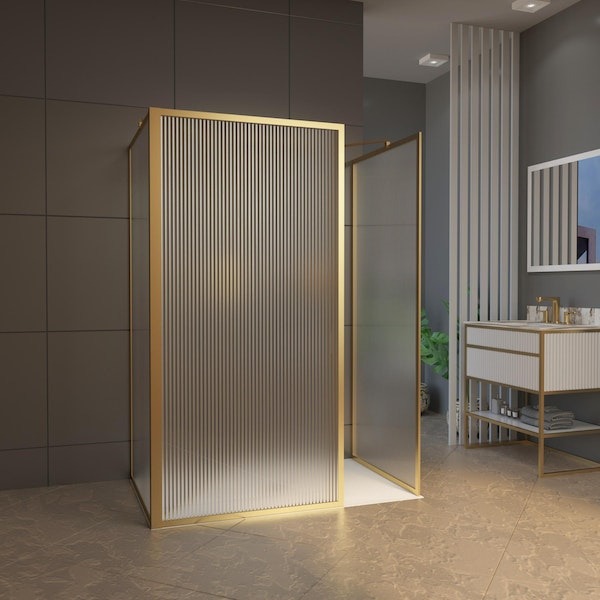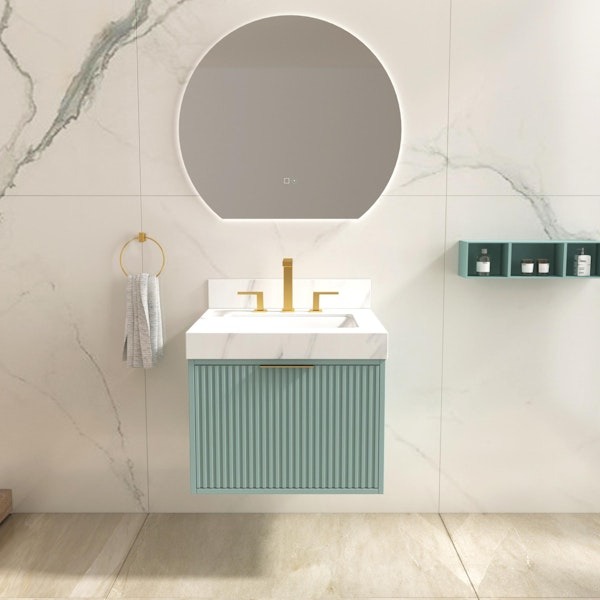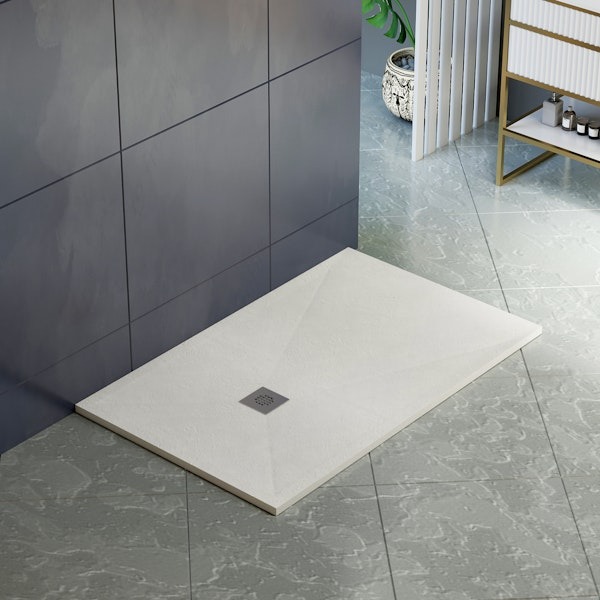
Bathroom safety is a subject often overlooked but is a crucial aspect of your peace of mind and well-being. A secure and hazard-free bathroom space prevents accidents and provides a greater feeling of calm.
By taking a comprehensive approach to bathroom safety, you can ensure that everyone - including children, elderly or disabled relatives, or visitors to your home - can use your bathroom confidently and independently.
Identifying Common Bathroom Hazards
It's essential to identify common bathroom hazards before implementing safety measures. This section will discuss some of the most prevalent hazards and their potential risks.
1. Slips, Trips, and Falls
Slippery surfaces, inadequate lighting, and cluttered pathways can increase the risk of slips, trips, and falls in the bathroom. Water on the floor, loose rugs, or uneven tiles can contribute to accidents. It's crucial to address these hazards to prevent injuries.
2. Electrical Safety
Water and electricity make for a dangerous combination. Faulty wiring, exposed electrical outlets, or improperly installed electrical fixtures can pose electrocution risks. Ensuring proper grounding, using GFCI outlets, and keeping electrical appliances away from water sources are essential safety measures you can take.
3. Scalding and Burns
Hot water can cause scalding and burns, especially in children and the elderly, who may have reduced sensitivity to heat. Setting the water heater temperature to a safe level and installing anti-scald devices on faucets and showerheads can help in accident prevention.
4. Chemical Safety
Many cleaning products and toiletries contain chemicals that can be harmful if not stored or used properly. Keep these substances out of reach of children, always use ventilation when using strong chemicals, and follow the instructions provided by the manufacturers.
Grab Bars and Handrails
Installing handrails & grab bars for bathrooms in strategic locations can provide stability and support for individuals with mobility challenges. These assistive devices can help prevent falls and promote independent movement within your bathroom.
Non-Slip Mats and Flooring
Using non-slip mats and installing slip-resistant flooring can significantly reduce the risk of accidents. These safety measures provide traction and stability, especially in areas prone to moisture, such as your bathtub or shower.


Adequate Lighting
Proper lighting is crucial for visibility and in turn, accident prevention. Install bright, well-placed light fixtures to ensure your bathroom is well-lit at all times. Consider motion-activated lights to provide illumination when entering the bathroom.
Childproofing Measures
Childproofing your bathroom is essential to protect curious little ones from potential dangers. Lock medicine cabinets, secure toilet lids, and use toilet seat locks to prevent accidental ingestion and drowning hazards. Always keep cleaning products and other potentially harmful substances out of reach.
Accessibility Features for Elderly and Disabled Individuals
To ensure disabled and elderly bathroom safety and help them use the bathroom independently, you might consider installing accessibility features. These may include raised toilets, walk-in showers or bathtubs, shower seats, and adjustable height fixtures.
Layout and Accessibility
A thoughtful layout with good accessibility is essential for creating a safe bathroom environment. This section will discuss some key considerations for optimising your bathroom layout.
1. Clear Pathways and Open Floor Space
Maintain clear pathways in the bathroom to prevent tripping hazards. Remove obstacles, such as mats or excessive furniture, and ensure there is ample open floor space for easy movement, especially for individuals with mobility aids.
2. Proper Placement of Fixtures and Accessories
Consider the placement of fixtures and accessories to promote safety and convenience. Place towel bars within reach, ensure toilet paper holders are easily accessible, and position mirrors at appropriate heights to accommodate users of different heights or mobility levels.
3. Optimal Height for Countertops and Vanities
Countertops and vanities at the appropriate height can prevent strain and discomfort. Ensure they are suitable for the intended users, considering height, wheelchair accessibility, and ergonomic design.
4. Slip-Resistant Surfaces and Rounded Edges
Choose slip-resistant surfaces for countertops, vanities, and other areas where water may accumulate. Additionally, opt for fixtures and furniture with rounded edges to minimise the risk of injuries from accidental bumps or falls.


Proper Storage and Organisation
Ample storage and organisation is essential for maintaining safety and cleanliness in your bathroom.
Bathroom vanity units provide effective storage for toiletries, towels, and other essentials. For a wide selection of high-quality, luxurious bathroom furniture that caters to different bathroom styles and sizes, you can explore the premium-quality vanity units range offered by Royal Bathrooms.
Regular Maintenance and Inspection
Regular maintenance and inspections are essential for ensuring ongoing bathroom safety. Consider incorporating these accessories to facilitate your maintenance tasks:
Toilet Plungers: A reliable toilet plunger is a must-have for dealing with clogs and preventing overflow.
Drain Hair Catchers: These simple yet effective devices prevent clogged drains by trapping hair and other debris.
Anti-Slip Shower Trays: Selecting the right shower tray is crucial for a safer bathroom. You can improve both safety and comfort by upgrading to a LuxeFlo slate effects shower tray. These trays are made from acrylic-capped stone resin, which makes them slip-resistant and highly durable.


Education and Communication
Educating household members and guests about safer bathroom practices is a good idea. Clearly communicate any specific hazards or safety measures in place, especially if there are young children or elderly individuals in the home.
To maintain a safe and hygienic environment, you can promote good habits such as wiping up spills immediately and closing the toilet lid after use.
Conclusion
Creating a safe and secure bathroom environment is vital for the well-being of everyone in your household.
You can significantly reduce the risk of accidents by identifying common hazards, implementing safety measures, and maintaining regular inspections. Remember to prioritise accessibility, proper storage, and good communication about bathroom safety.
